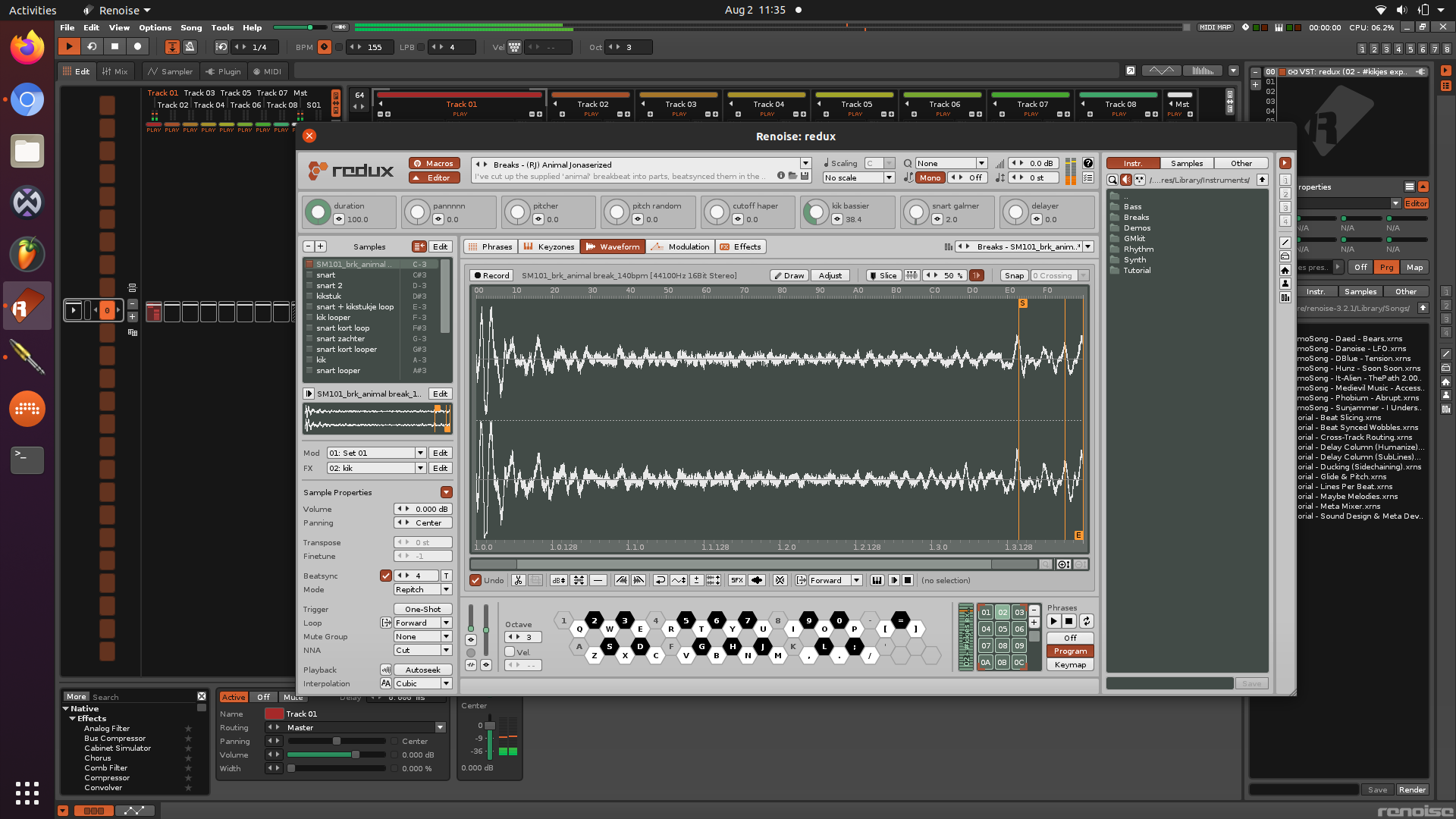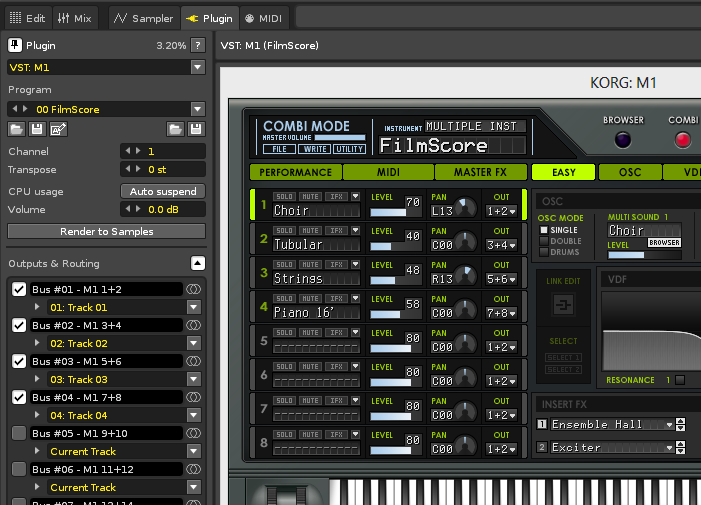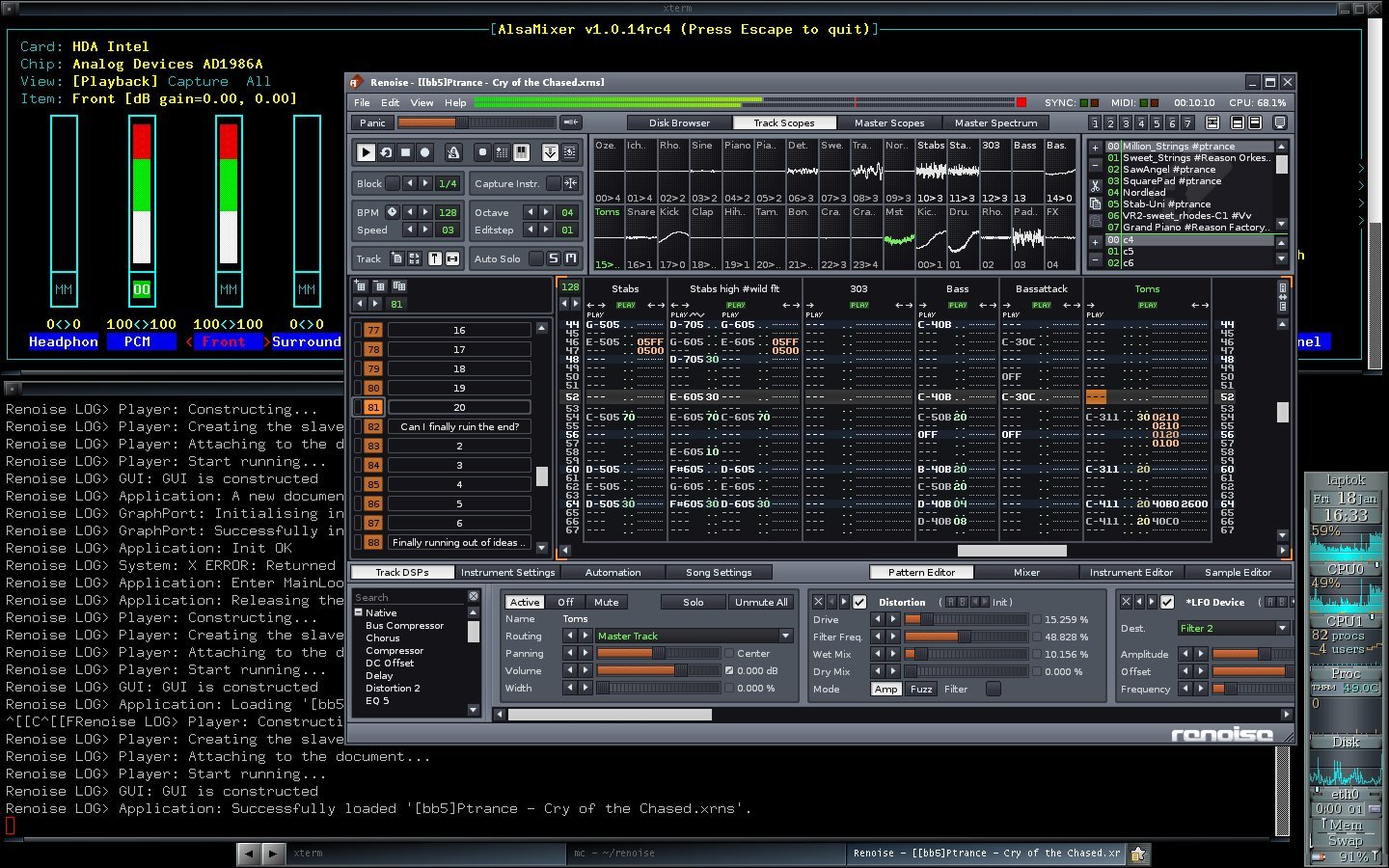

renoise.song ( ):add_track_to_group (track_index, group_index ) Is not a group track, a new group track will be created and both tracks Right spot to the left of the group track, and then adding it. renoise.song ( ):insert_group_at (index ) -> Īdd track at track_index to group at group_index by first moving it to the Insert a new group track at the given index. renoise.song ( ):select_previous_track ( ) TakesĬare of skipping over hidden tracks and wrapping around at the edges. Set the selected track to prev/next relative to the current track. Use properties 'tracks' to iterate overĪll tracks and to query the track count. renoise.song ( ):swap_tracks_at (index1, index2 )Īccess to a single track by index. Track and a regular track can only be swapped with another regular track. renoise.song ( ):delete_track_at (index ) Renoise needs at least one regular track to work, thus trying toĭelete all regular tracks will fire an error. The Master track can not be deleted, but all SendsĬan. renoise.song ( ):insert_track_at (index ) -> ĭelete an existing track. Master Track's index will create a Send Track. Give your changes a custom undo description (like: "Generate Synth Sample") renoise.song ( ):describe_undo (description ) Something more descriptive, you can (!before changing anything in the song!) If those auto-generated names do not work for you, or you want to use When the song is changed from an action in a menuĮntry callback, the menu entry's label will automatically be used for the Undo/redo by looking at what first changed (a track was inserted, a pattern When modifying the song, Renoise will automatically add descriptions for

Will do nothing if nothing can be redone. Test if something in the song can be redone. Will do nothing if nothing can be undone. Test if something in the song can be undone. ~ = (song_pos, song_pos ) -> (song_pos, song_pos ) ->= (song_pos, song_pos ) -> renoise.Song Constants _NUMBER_OF_INSTRUMENTS Position in the pattern at the given pattern sequence. Helper class used in Transport and Song, representing a position in the song. NOT valid when called from the XRNX globals whileĪ tool is still initializing XRNX tools are initialized before the initial

Always valid after theĪpplication is initialized. renoise FunctionsĪccess to the one and only loaded song in the app. Please read the INTRODUCTION first to get an overview about the completeĪPI, and scripting for Renoise in general. Instruments, Tracks, Patterns, and so on. Renoise's main document - the song - and the corresponding components such as This reference lists all available Lua functions and classes that control renoise.SampleVelocityTrackingModulationDevice.renoise.SampleKeyTrackingModulationDevice.That said I've not tried it myself yet, I still have enough trouble getting Ableton to do what I want it too without complicating things further. He says it's the best thing to cut breaks to pieces and re-assemble them, and told me its exactly what you want to be using if you're going for those classic Remarc style butchered amens. Re: Re-noise one of the guys who has been giving me pointers on production uses it. It's a pretty simple way to create bass in these days or huge resampled, multilayer, monster basses, but I've always liked that booming jungle sound and since I am making stuff purely for myself, its not an issue. I have a couple of other old school sounding things on the go too and one of those uses an 808 kick with a bit of eq on it as the bass line. I might also have given it small boost at a 'sweet' frequency, I can't recall without loading up Ableton and I'm at work right now. However the bass in my tune is simply the main synth line played a couple of octaves down and low pass filtered to take all the top off. I can't tell you too much about production as I am a relative beginner.


 0 kommentar(er)
0 kommentar(er)
